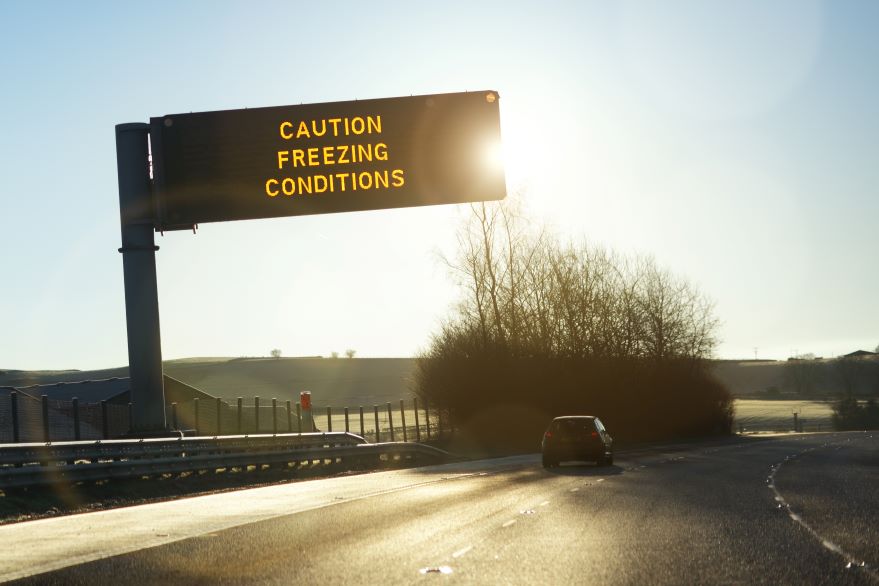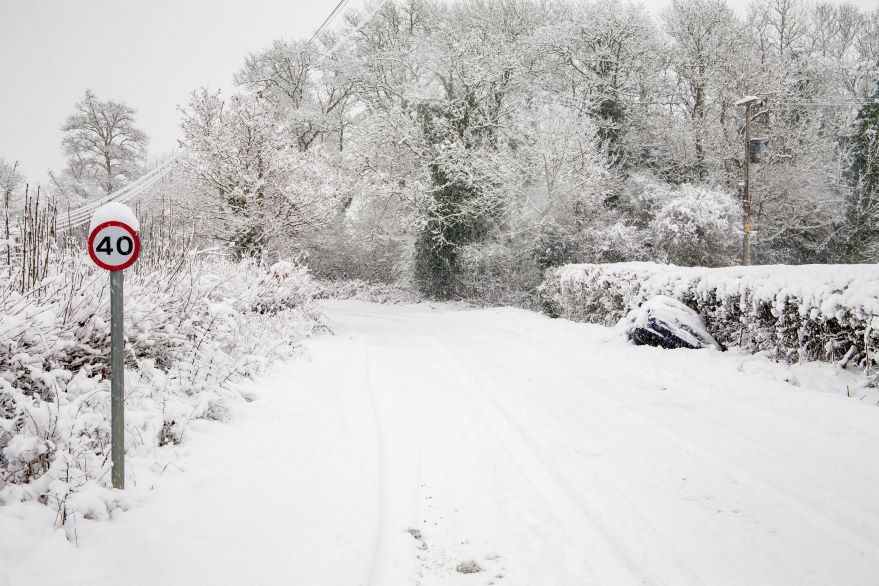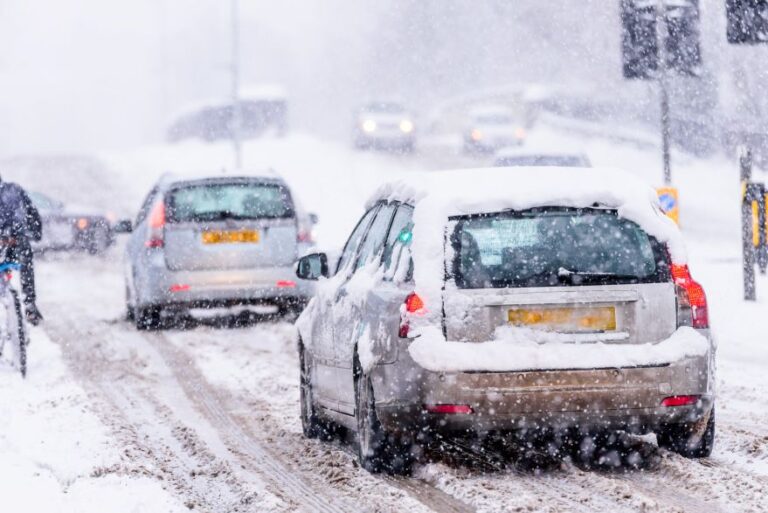With winter in full swing, driving in snow and ice presents unique challenges. But with careful preparation and awareness, you can ensure a safe journey. This guide will walk you through essential tips and checks to help you navigate these conditions confidently. From emergency kits to expert advice on handling icy and snowy roads, we’ve got you covered. So, buckle up and let’s make sure you’re ready for whatever winter throws your way!
- What should you check before you set off?
- Do I need winter tyres or snow chains?
- Advice for driving in icy conditions
- Advice for driving in snowy conditions
What should you check before you set off?
It’s useful to have a checklist of things to prepare before you drive, to avoid any preventable accidents or damage. Before you set off, you should first and foremost ask yourself whether your journey is necessary. Driving in adverse conditions can be very dangerous! If you decide to drive, ensure that you give yourself plenty of time for your journey.
Check driving conditions near you
You should check the weather forecast in your area for snow or icy conditions before setting off. Find your local forecast on the Met Office’s website here
Car maintenance checks
Before driving, you should carry out the following easy maintenance checks:
- car battery
- tyre tread and pressure
- lights
- windscreen wipers (in case they are frozen)
- screenwash level

Have an emergency kit ready for winter months
It’s important to have as many of the following items in your car in case you become stranded or break down:
- a shovel
- ice-scraper
- demisting pad
- spare screen wash
- spare de-icer
- a square of carpet for your tyres to grip on if you get stuck in the snow
- Snow socks – high-grip fabric covers that can be fitted over the car’s driven wheels
- blankets and extra layers
- a warning triangle
- phone charger
Do I need winter tyres or snow chains?
Both of these products will help you drive safer in snowy conditions, but each depend on the severity of the conditions in your area.
Winter tyres
- While they aren’t legally required in England as they are in some other countries, it’s recommended for those living in more isolated areas that are more susceptible to adverse weather conditions, such as the Scottish Highlands.
- They offer more grip than standard-fitted summer tyres in extreme conditions, especially in snow.
- While they can drastically improve a car’s performance in these conditions, they may not be able to tackle very deep snow.
Snow chains
- Similiarly to winter tyres, they are not a legal requirement in the UK. However, they offer a far greater grip than winter tyres in snowy conditions.
- They are best suited for deep snow.
- They must be removed once the snow has cleared and when driving on a clear road, because they could cause damage to your car or the road.
Advice for driving in icy conditions
- Tyre grip is massively reduced on icy roads, thus your breaking distance will be much longer. Your breaking distance can increase up to ten times more than in normal conditions, so you should leave ten times the recommended gap between you and the car in front.
- Check well ahead for potential hazards (such as ice) and keep your speed well down
- Smooth driving is key for icy roads, so you should accelerate, brake, steer and change gear as smoothly as possible to reduce the risk of a skid.
- You may need to drive in a higher gear to aid grip on packed ice.
Driving on black ice
Black ice can be very dangerous for drivers – as it’s only a thin layer of ice, it can appear the same colour as the road and can be almost impossible to spot. Here’s what to look out for:
- As a rule of thumb, if the road looks ‘wet’ in low temperatues in could be black ice.
- Black ice can appear as a glossy sheen on the road surface and may glint in the sunlight
- Look out for drivers ahead swerving for no apparent reason.
- However, it’s likely you won’t be able to spot black ice at all, especially in shaded areas of road.
If you do hit a patch of black ice, make sure you:
- Keep the steering wheel straight.
- Maintain your speed and don’t hit the breaks.
- Use gear changing to slow down if needed, and avoid any sudden movements.
- If you begin skidding, steer gently into it. For example, if the rear of the car is skidding to the right, steer gently to the right.

Advice for driving in snowy conditions
- Accelerate gently, using low revs to change up to a higher gear as quickly as possible
- Similarly to icy conditions, your car’s tyre grip will be massively reduced, resulting in a far greater breaking distance. Make sure you leave up to ten times the normal gap between you and the car in front.
- Look well ahead for uphill roads and leave plenty of room so that you can maintain a constant speed.
- When driving downhill, use a low gear and avoid braking unless necessary.
- When approaching a bend in the road, you must break before you start turning the wheel. If you lose grip, don’t panic; take your foot off the accelerator and ensure your wheels are pointing in the direction you want to travel.
- In heavy snow conditions where visibility is poor, use your dipped headlights. If the visibility drops below 100m, use your foglights and make sure you’re driving much slower than normal.
- Try to avoid driving in the wheeltracks of other vehicles, especially if the road has not been gritted, as compressed snow can be more icy than fresh snow.
- Just as with icy roads, smooth driving is key – ensure you are steering, accelerating, braking and changing gears slowly and smoothly.
If you are looking for any further information, the Highway Code has useful advice for driving in adverse weather conditions. See rules 228 to 231 for icy and snowy weather.
Driving in snowy and icy conditions can be quite daunting, but with the right preparation and caution, you can stay safe on the roads. Make sure to check the weather, be prepared with the right equipment, and drive smoothly! Stay safe out there, and remember, sometimes the best choice is to stay home and enjoy a cozy day indoor!
Sources: RAC, Admiral
This is a marketing blog by Howden Insurance.

